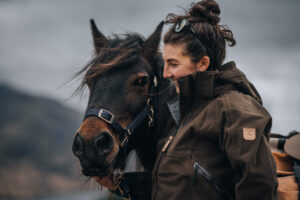In Free Rein, which first appeared in issue 08 of BASE, Eliza Brown explored the nuances behind adventuring with a fell pony as she recounted her journey through the Scottish Highlands. Now as part of The Shakedown series in which we take a look at the nuts and bolts of adventure set-ups across all disciplines, Eliza takes us through the set up she uses for pony trekking expeditions.
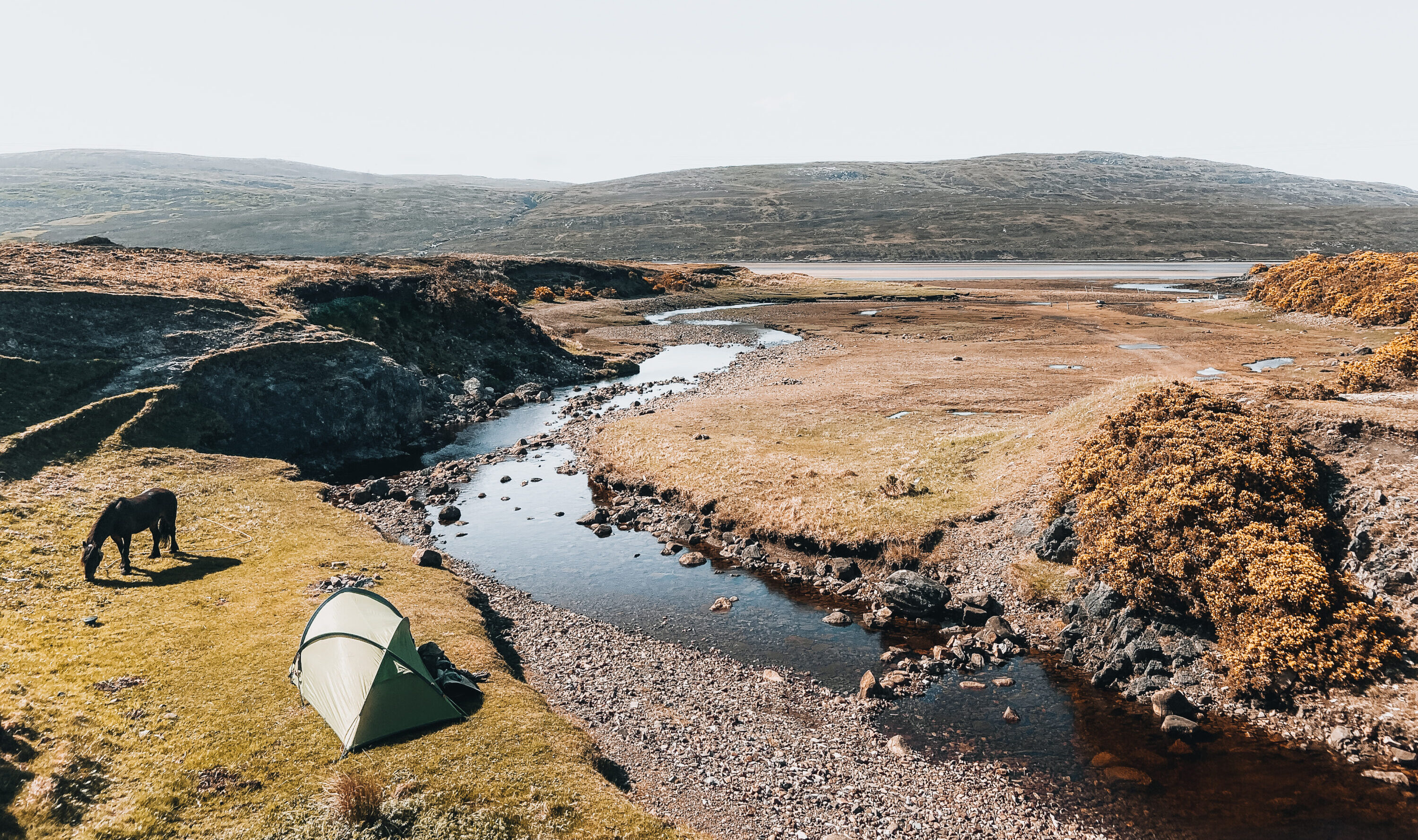
What you carry on a pack pony adventure depends entirely on the adventure in question! It is also subject to the number of ponies you have with you! For example, a four day trek with four ponies through the Lake District, it’s possible to load up all the grandeur. A teepee, a stove, pots and pans, delicious food, a bottle of wine, you name it. That is the beauty of travelling with a pony. It can be comfy, it’s idyllic, a wholesome holiday.
Packing for a longer expedition however requires another set of logistics entirely. I have, in time, learnt from my work as an expedition guide, how to pack systematically, to carry with me only the essentials. It wasn’t long ago that I returned from the Arctic. I learnt a lot from polar exploration and polar travel and I was able to transfer a few of these skills into travelling with a pack pony. Packing pulks and packing ponies are surprisingly similar and I have developed a few nifty tricks that work for both styles of endurance travel.
The key to packing successfully is compacting everything so that you keep within that 50kg load. So for my recent 19 day expedition through the Scottish Highlands, this is how I did it.
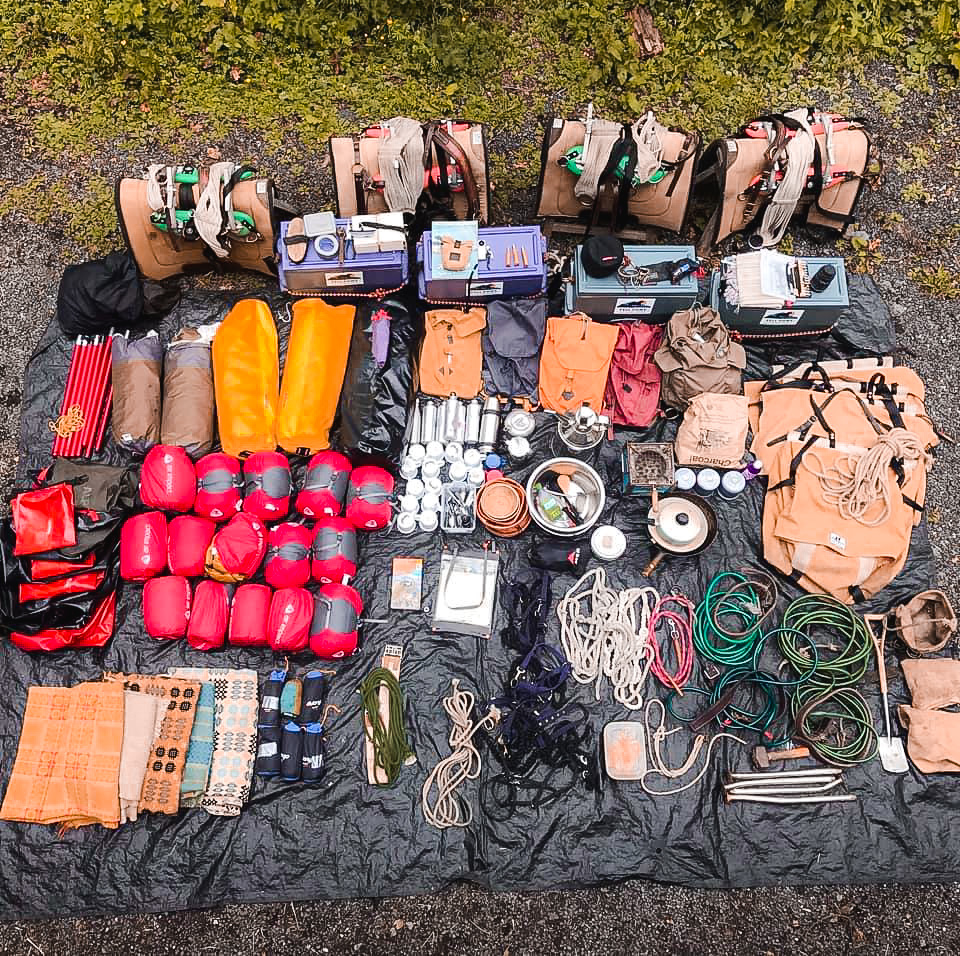
Food
How do you minimise weight but carry enough calories to ensure sufficient energy levels are maintained throughout a long expedition? To put this into perspective, my step count would be an average of 50,000, and I would be burning about 3,000 active calories per day. My priority was taking nutrient dense and high calorific meals and snacks that I could compact down.
To keep things simple, all three of my main meals would only require hot water to make them consumable. There was no real cooking involved. It kept things efficient and ensured I always had food to hand. I didn’t have to rely on building a fire. I needed instant food so that if I caught myself on a mountain side where it was bitterly cold, and I was trying to make a big decision, I knew I had a sufficient meal ready for me to fuel my body and my brain. This was crucial.
My priority was taking nutrient dense and high calorific meals and snacks that I could compact down
The Menu
Breakfast
The Brekkie bomb – Quick oats (complex carbs), protein powder (protein), Nesquick chocolate milk power and crushed pecans (fats). Each meal had been measured out into portion sizes for each day. All I would need to do is boil water using my jetboil to add hot water. At breakfast I would also boil enough water to fill my flask for lunch.
Lunch
39p instant pot noodles, with a lump of cheese. I would add the pre-boiled hot water from my flask to the noodles and let them sit for 5 mins whilst I made an instant coffee. Every time I opened the packet, a curious nose would appear over my shoulder. Pansy would always try and steal some! Who knew ponies liked noodles?
Dinner
Expedition Foods rehydration meal which was 800kcals.
Snacks
On top of my three main meals I would have 150g of chocolate, fruit and nut mix, four Belvita biscuits and a protein bar. And of course, I always carry Polo mints in my pocket for my companion.
It takes a lot to prepare for 19 days, but it is super efficient. There was nothing luxurious about my food, I wanted to make it as simple as possible.
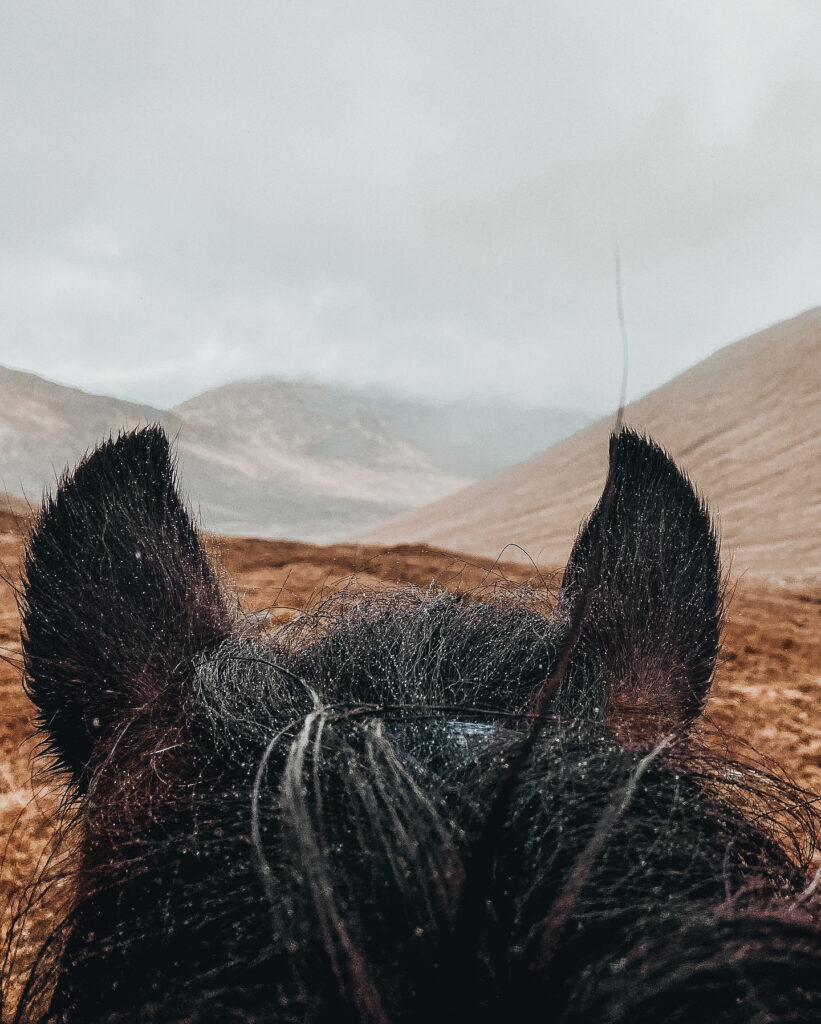
The pack pony saddle is custom made in British Columbia, Canada by a company called Custom Pack Rigging. The two canvas packs hang from pronounced hooks that make up the aluminium saddle. The saddle is secured in place by two woven girths, a tail strap which prevents the saddle from slipping forward on descents and a chest strap which prevents the saddle from slipping back during ascents. I would use the numner – the pad that sits beneath the saddle – as a sleeping mat at night.
Each pack must weigh the exact same. This is where the fun begins. For my Scottish expedition, I got the weight down to 24kg each side, which sounds like a lot but everything I carried I really needed. I carried with me a hanging digital travel scale so that I could weigh the bags to ensure they were even.
Each pack must weigh the exact same. This is where the fun begins
My biggest piece of advice when packing for any adventure is to categorise your kit into its use. A day bag, a night bag, a grab bag, medical kit, your personal gear, pony kit and camping kit. Colour code and label it.
I categorised the two packs by their contents – one pack was my day bag and the other my night bag. The day pack would contain my grab bag. This would hold any instant tools I may have needed during the day, such as my Leatherman, bail twine and climbing rope for big river crossings. I would also keep a spare coat and a jumper in there, hats and gloves, and the medical kit. This pack would also host Pansy’s gear – her tether, a sponge, hoof pick, boots, emergency nuts and tick repellent. The night pack would contain the camping gear, food and my personal clothing and toiletries. Any remaining items, such as water, snacks and my water shoes for river crossings, I would use to spread amongst the two packs to even out the last few kilos of weight. The last few bits, my Akubra hat, Garmin inReach and Brechfa knife, I attached to the saddle with carabiners.
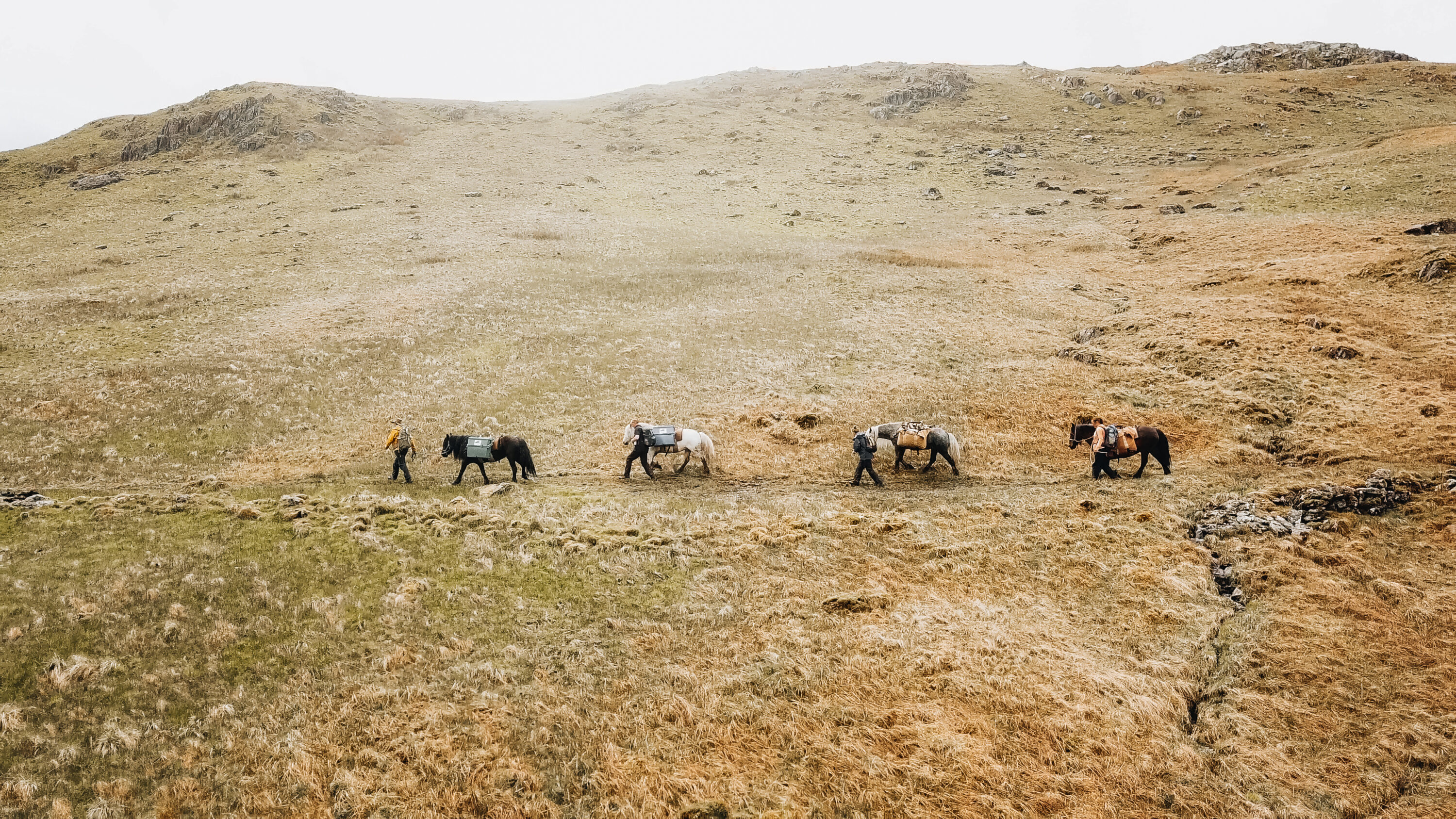
As time went on, I would get better at predicting the weights. The heaviest item I carry is a hammer and the tether for the pony. The most useful, a rope, for bigger river crossings. I would cross the river first, rope around my waist, using the pony as an anchor. Once safely to the other side, I would then use my voice and a gentle tug on the line to encourage the pony across. I would also need rope if we found ourselves in a bog, something I hope I will never experience!
Whether you are a horsey person or not, travelling with a pack pony is hands down one of the most rewarding, wholesome and immersive modes of adventure travel I have experienced. If you fancy exploring the hidden hills of the Lake District, while also helping save the endangered fell pony population, then get your walking boots on.
For more content from The Shakedown series, check out Fenwick Ridley’s Essential River Trekking Kit here.
